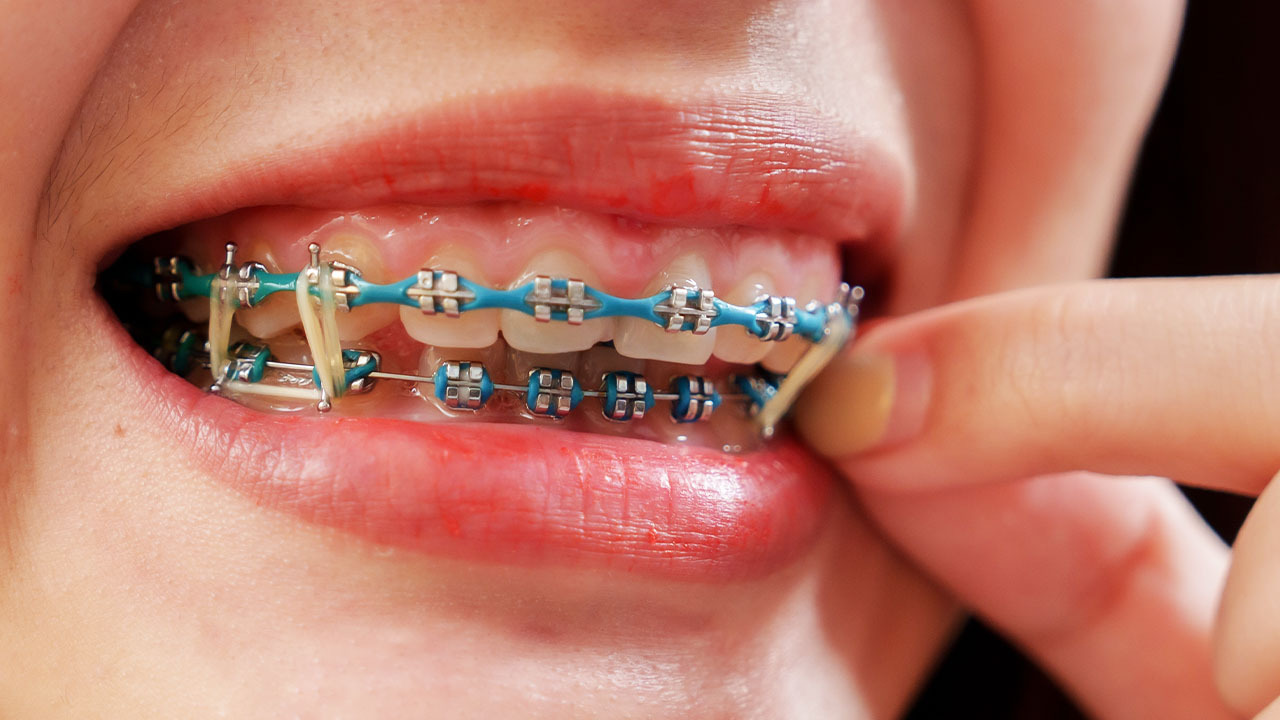Braces rubber bands might seem like just another part of the braces experience, but they actually play a major role in getting your teeth aligned just right. These small but mighty elastics work alongside your braces to help fix bite issues, straighten teeth, and fine-tune your smile. If you’re wondering what exactly these rubber bands do, how they work, or if there are alternative options like invisible braces that don’t use them, you’ve come to the right place. Let’s dive into everything you need to know about braces rubber bands and why they’re so important!
What are rubber bands in braces for
Rubber bands in braces, often called elastics, are helpful when it comes to getting your teeth and bite just right. They work by connecting different parts of your braces, usually between the top and bottom teeth, to apply extra pressure that helps move your teeth into place. This added force is what helps fix bite issues, like overbites or underbites, and ensures your teeth align perfectly.
Elastics are usually used when braces alone can’t fix specific problems, like adjusting how your upper and lower teeth come together. So, while your braces handle the big job of straightening your teeth, these little rubber bands take care of the finer details, helping you get the best results!
Types of rubber bands for braces
When it comes to rubber bands for braces, there’s more variety than you might think! They come in different types based on elasticity, size, and color, each playing a specific role in aligning your teeth.
- Elasticity: Rubber bands vary in strength. Your orthodontist will select a specific elasticity based on how much pressure is needed to move your teeth. Lighter elastics are used for small adjustments, while stronger ones can correct more significant issues, like bite alignment.
- Size: Smaller elastics are typically used for minor tooth movements, while larger ones are essential for bigger jobs, like fixing an overbite or underbite.
Color: For a fun twist, rubber bands come in different colors! Whether you prefer a bold shade or something more subtle like clear, the color choice doesn’t impact function but adds a bit of personality to your braces.
Types of braces rubber bands based on their usage
Rubber bands in braces aren’t one-size-fits-all! Depending on the specific alignment or bite issue you’re dealing with, your orthodontist will use different types of rubber bands to get the job done.
- Class I elastics: These are used to close gaps between your teeth by applying gentle pressure in targeted areas to bring those teeth closer together.
- Class II elastics: If you have an overbite, Class II elastics help by moving your upper teeth back and your lower teeth forward, working towards proper alignment.
- Class III elastics: For those with an underbite, Class III elastics shift your lower jaw back while gently guiding your upper teeth forward to create a balanced bite.
- Vertical elastics: These are perfect for fixing deep bites, helping to reduce the space between your upper and lower front teeth for a better fit.
Cross elastics: If your upper teeth sit inside your lower teeth, cross elastics assist in adjusting your bite by guiding your teeth into a more aligned position.
Straighten teeth without rubber bands and hooks
For those seeking a way to straighten their teeth without the fuss of rubber bands and hooks, invisible braces present an excellent option. These advanced aligners, such as Zenyum’s, are crafted from smooth, clear material that snugly fits over your teeth. They gently apply pressure, gradually guiding your teeth into alignment over time, ensuring a comfortable experience that remains discreet.
Comfort meets confidence with Zenyum's Invisible Braces
If dealing with rubber bands and hooks sounds like a hassle, Zenyum’s Invisible Braces offer a comfortable and convenient alternative. Unlike traditional braces, our clear aligners straighten your teeth without the need for rubber bands, giving you a more seamless and hassle-free experience.
With custom-made aligners designed just for you, and progress tracking via the Zenyum app, achieving your dream smile has never been easier—or more comfortable.
Find comfort and confidence in your smile journey
Braces rubber bands play a vital role in orthodontic treatment, helping align your teeth effectively. However, if you prefer a more comfortable and discreet option, Zenyum’s Invisible Braces provide a fantastic alternative. Designed for both comfort and efficiency, our clear aligners allow you to achieve your dream smile without the need for rubber bands.

Excited to discover a more comfortable path to your best smile?
Your path to a relaxed and confident smile starts with Zenyum.
FAQs
Can you eat with rubber bands on your braces?
Yes, you can eat with rubber bands on your braces! However, it’s best to stick to softer foods to avoid discomfort. Just be careful with chewy or hard foods that might put too much pressure on your braces. If you find that eating is tricky, you can remove the rubber bands temporarily, but make sure to put them back on afterward to keep your treatment on track.
How to put elastic rubber bands on your braces?
Putting on rubber bands is pretty straightforward! Here’s how you can do it:
- Wash Your Hands: Always start with clean hands to maintain good hygiene.
- Grab the Rubber Band: Take one rubber band and hold it between your thumb and index finger.
- Locate the Hooks: Find the hooks on your braces where the rubber band will go.
- Place the Band: Loop one end of the rubber band onto one hook, then stretch it to the opposite hook and secure it.
- Check for Comfort: Make sure the band is snug but not too tight. It should feel comfortable against your teeth.
If you’re unsure, your orthodontist can show you the best way to put them on during your next appointment.




